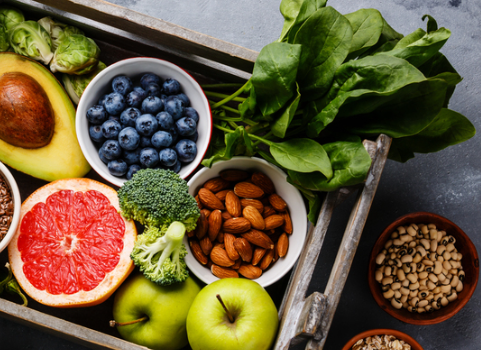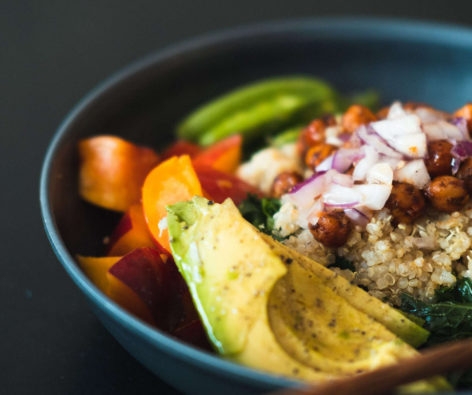
Eating a diet full of fruits and vegetables is essential for overall health. These nutrient-rich foods provide vitamins, minerals, antioxidants, and fiber that strengthen the immune system and help prevent chronic diseases. However, many people find it challenging to include enough fruits and vegetables in their daily meals.
In this blog, we’ll share 15 simple yet effective tips to help you increase your fruit and vegetable consumption and enjoy the numerous health benefits they offer.
1. Start Your Day with Fruit
Begin your morning by adding fruit to your breakfast. Whether it’s bananas, berries, or chopped apples, adding fruit to oatmeal, cereal, or yogurt is an easy way to start the day with a healthy boost.
2. Blend Up Smoothies
Smoothies are an excellent way to get multiple servings of fruits and vegetables. Blend a couple of fruits, like mangoes or berries, with some spinach or kale to create a nutrient-packed drink that’s both delicious and easy to consume.
3. Experiment with Salads
Salads don’t have to be boring. Get creative by mixing fruits and vegetables together. Try combinations like mixed greens with strawberries or spinach with mango. Adding slices of apples or grapes to a traditional salad can also add a refreshing twist.
4. Prep Fruit and Veggie Snacks
Slice up fruits and vegetables and store them in containers in your fridge for easy access. Having snack-sized portions ready to go makes it simple to grab a healthy option when you’re hungry.
5. Add Vegetables to Sandwiches
Elevate your sandwich game by adding a variety of veggies like lettuce, cucumber, tomatoes, or sprouts. Not only will this add a satisfying crunch, but it also boosts the nutritional value of your meal.
6. Make Hearty Vegetable Soups
Soups are a great way to incorporate multiple vegetables into one meal. Get creative with different combinations of veggies to find flavors you enjoy, and enjoy a comforting bowl of nutrition.
7. Try Vegetable Stir-Fries
Stir-frying vegetables helps retain their nutrients and enhances their natural flavors. Use colorful vegetables like peppers, broccoli, carrots, and snap peas, and season them with your favorite herbs and spices for a tasty dish.
8. Keep a Fruit Bowl in Sight
Place a bowl of fresh fruit on your kitchen counter where it’s easy to see. This visual reminder makes it simple to grab a piece of fruit when you’re looking for a snack.
9. Sneak Vegetables into Sauces
Boost your vegetable intake by blending veggies like spinach, zucchini, or carrots into your pasta sauces. This is a great trick for adding nutrition to meals without compromising on taste, especially for picky eaters.
10. Serve Vegetables with Every Meal
Make it a habit to include a side of vegetables with lunch and dinner. Whether you steam, roast, or sauté them, having veggies on the side adds variety and enhances the flavor of your meals.
11. Try New Recipes
Look for new recipes that feature fruits and vegetables as the star ingredients. Experimenting with different dishes keeps mealtimes interesting and helps you discover exciting ways to incorporate more produce into your diet.
12. Choose Fruit-Based Desserts
If you have a sweet tooth, opt for fruit-based desserts. A bowl of mixed berries, a sliced mango, or a fruit salad with some Greek yogurt makes for a refreshing and nutritious treat.
13. Set Personal Challenges
Challenge yourself to try a new fruit or vegetable each week. Maybe experiment with a veggie you haven’t enjoyed in the past, or try a seasonal fruit you’ve never had before. You might surprise yourself with how much you enjoy it.
14. Grow Your Own Produce
If you have the space, consider starting a small garden. Growing your own fruits and vegetables can be a rewarding experience, and it gives you easy access to fresh, organic produce whenever you need it. Tomatoes are a great starting point for beginners.
15. Be a Role Model
Lead by example and inspire others to eat more fruits and vegetables. Share your favorite recipes, your experiences, and the benefits you’ve gained from eating a produce-rich diet with friends, family, and colleagues.
By following these practical tips, you can easily increase your fruit and vegetable intake and enjoy the many health benefits that come with eating a diet rich in these nutrient-dense foods. Whether it’s through simple additions to your meals or trying new recipes, incorporating more produce into your diet is a great way to support your overall health.










